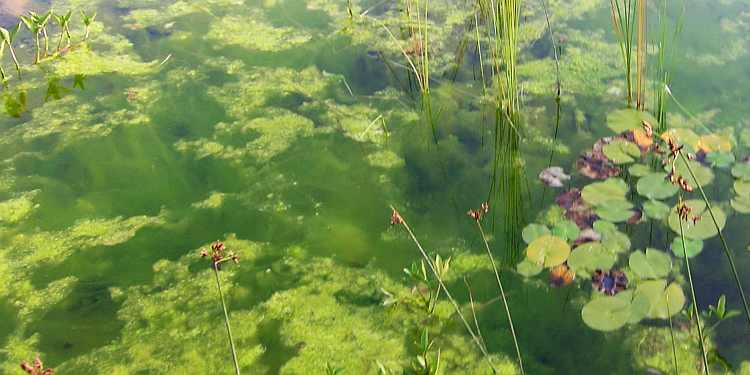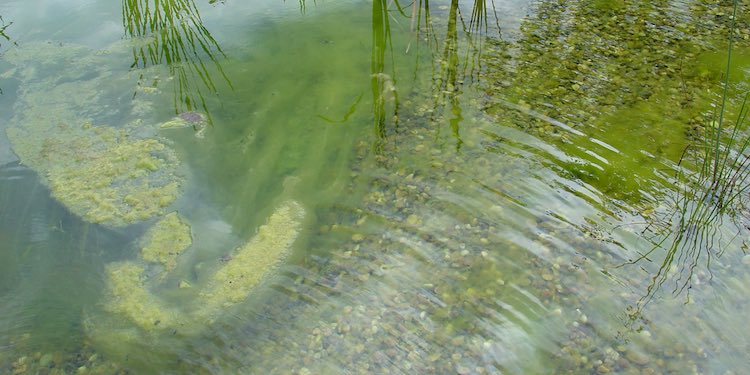The “thread algae” is not a botanical-systematic term, but a collective term for algae visible to the naked eye – tufts, balls, cotton tufts or mats. Thread algae grow and stick under water to aquatic plants, stones and dead wood.

Thread algae in spring and summer
Thread algae develop very quickly in spring and early summer because they are the first nutrient consumers in water. By the time the aquatic plants grow, thread algae begin to grow at lower water temperatures. Due to this advantage, the thread algae grow almost explosively.
Thread algae are green algae
Thread algae have different manifestations. Mostly they appear as long thin threads (from a few centimeters up to several meters), which are partly interwoven in themselves. In many cases, the long-threaded green algae are interwoven in such a way that they can hardly be untangled.
Depending on the time of day, thread algae rise up and float as mats on the water surface. If they sink, they cover the bottom of the pond. Thread algae are adaptable and can become accustomed to chemical poisons, so that they become more and more resistant to them with the increasing use of chemical agents to combat them.
Thread algae develop when the water values are too high, i.e. the nutrient content in the water is too high. Usually a too high phosphate (phosphorus) value is the cause for the thread algae formation. With a lot of underwater plants you can contain thread algae after several years.
What to do against thread algae?
With high-precision click tones against thread algae: The click generator sends click sounds under water through the pond that are above the hearing frequency of humans and animals and are not audible. The vacuum in the middle of the algae cell, however, is resonated until it breaks and the algae dies.
Existing thread algae within seven weeks. By manually removing the algae during the transition phase, the phosphate in the water, one of the main nutrients of the algae, is removed.
How does the phosphate get into the garden pond?
Phosphate and other nutrients are contained in lawn fertilizer and nutrient-rich garden soil and are often washed into the pond by heavy rainfall. Also fish excrement and remainders of fish food as well as foliage promote algae growth.
Tips for combating thread algae

- When constructing the pond: ensure good shading and install very shallow areas.
- When colonising the pond: use fast-growing aquatic plants, combination of pure underwater plants and marsh bed plants, use none or only very few fish, use thread algae repellents (such as Koi, Siamese trunk barbs) only in fish ponds.
- When maintaining the pond: Do not fertilize pond water, minimize water exchange (no flow), cover the pond in autumn with a leaf fall net, place tannin-producing peat bags or sacks of rye straw in the water, fish thread algae by hand.
- EM Effective microorganisms: Starter bacteria support pond cleaning, counteract turbidity, strong odours and algae growth. With controlled plant growth, zooplankton, which serves as food for numerous other aquatic organisms, can develop and thus create the basis for a stable and closed cycle. This is important for the development and preservation of the water. For optimal results, EM is combined with an algae eliminator.

